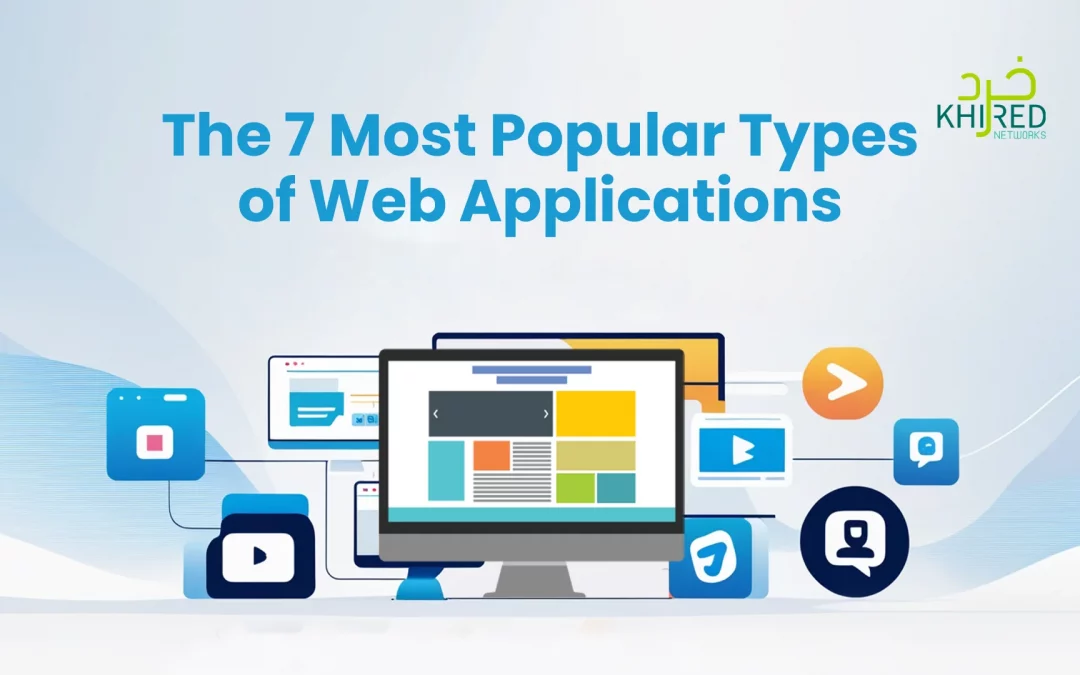With the continuous expansion of digital transformation, the landscape of website application development is also expanding. The industry has become the backbone of the online experience, suggesting the significance of this software for businesses. True, in this fast-paced era, people prefer mobile use, but website development is integral to business scaling. It stands true, particularly in the case of SaaS development companies.
It’s important to understand the difference between a website and a web application. The latter offers users an interactive interface, allowing them to perform tasks or access a service. For example, WordPress, Amazon, Facebook, etc., are all web apps. In contrast, a website is mostly static and offers an informative experience. This article focuses on web applications and gives a walk-through of the most popular types.
Popular Types of Web Applications
Here’s a general classification of web apps based on their types and classification:
1. Static Web Apps
It is the first application type built using HTML and CSS frameworks. These are server-generated applications that offer a less interactive user experience. The dynamic content they display is all thanks to the browser’s technologies, not the server.
|
Pros |
Cons |
|
Less complex |
Little to no flexibility |
|
Good loading speed |
Less dynamic content |
|
More secure |
Less user engagement |
Ideal for sectors: marketing, portfolio websites, branding, etc.
Examples: Portfolio websites, landing pages, prototypes, etc.
2. Dynamic Web Apps
These apps are comparatively more interactive and intricate compared to the former. These rely on backend frameworks, such as Node.js, Laravel, Django, etc. These apps respond to user actions and help generate personalized experiences. These are more sophisticated and sore website data using databases.
|
Pros |
Cons |
|
Better scalability |
Longer development time |
|
Wide user reach |
Slightly costly due to increased functionality |
|
Flexible to update content |
– |
Ideal for sectors: Social media apps, IT industry, Healthcare and Logistics, etc.
Examples: Netflix, Facebook, Instagram, etc.
3. E-commerce Apps
Per the name, these platforms allow for online product and service purchasing and selling. The websites also help in updating the website content. Angular, Wix, and WooCommerce are some frameworks that support the making of E-commerce web apps. They play a major role in opening to global markets, eliminating the need to maintain conventional brick-and-mortar stores.
|
Pros |
Cons |
|
Reduced upfront costs |
Reduced upfront costs |
|
Wide customer reach |
No product trial facilities unless purchased |
|
Personalized approach |
– |
Ideal for sectors: Retail and wholesale
Examples: Amazon, Walmart, Alibaba, etc.
4. CMS Web Application
CMS or Content Management Systems are web apps that allow users to directly edit, create, and publish content. Users can make changes directly from the admin panel, which eliminates the need to learn complex programming languages for the purpose.
|
Pros |
Cons |
|
Quick development |
Security risks |
|
Less coding required |
Limitation in customizations |
|
Affordable |
Often requires costly plugins and tools |
|
Multilingual |
– |
|
Makes real-time changes quickly |
– |
Ideal for sectors: Blogging and publishing websites
Examples: WordPress, Shopify, Drupal, etc.
5. Single Page Web Application
These applications start with the downloading of a single website page and gradually move on to include more content (both text and graphics). Within a browser, these apps run seamlessly and do not require long loading times. You can easily perform your desired function, having access to the sidebars and the headers intact on the page. The email apps offer the best representation of this concept.
|
Pros |
Cons |
|
Reduced loading times |
Slightly complex |
|
Improved performance |
Exhibits some security issues |
|
Good user experience |
Less compliance with SEO guidelines |
|
Requires less bandwidth |
Browser compatibility (in some cases) |
Ideal for sectors: FinTech, navigational apps, visual discovery apps
Examples: Gmail, Twitter, Google Maps, etc.
6. Portal Web Apps
Companies and businesses use portal web applications to access important data from a single point of access. On one home page, such an application can access multiple sections, bringing out details from sources such as emails, search engines, and online forums. Portal web apps are best suited for building interfaces that keep users’ details, tools, and documents in one place. However, only registered users can access the portals.
|
Pros |
Cons |
|
Efficient delivery of information |
Security concerns |
|
Offers a personalized interface |
Authentication errors |
|
Ensures data accuracy |
No real-time flow of information |
|
Supports user’s high productivity |
– |
Ideal for sectors: Health institutions, educational systems, community and membership websites, etc.
Examples: Udemy, Coursera, edX, etc.
7. Animated Web Applications
As the name suggests, these applications support animations, letting you display moving graphics alongside static content. Their unique motion graphics and creativity make them best suited for use in the entertainment industry.
|
Pros |
Cons |
|
Makes learning attractive |
SEO challenges |
|
Increases user engagement and interaction |
Slow loading |
|
Supports high-end animations |
Data overloading |
|
Strengthens brand reputation |
– |
Ideal for sectors: Entertainment industry, gaming, fashion industry, etc.
Examples: Hover animations on a landing page and spinning wheels as data loads on a website.
Final Words
In the modern business landscape, web applications have earned a dominant place. Not just one, but several web applications are now present, making the tasks easier. The article explains some of the popularly used web apps and how they can benefit a business.
However popular the software might be, today, businesses are also opting for custom web application development to meet their clients’ specific needs. So, a thorough understanding of such software will help you decide smartly and choose the one that’s best suited for your business.
Embrace the digital age—it’s truly here to stay!



